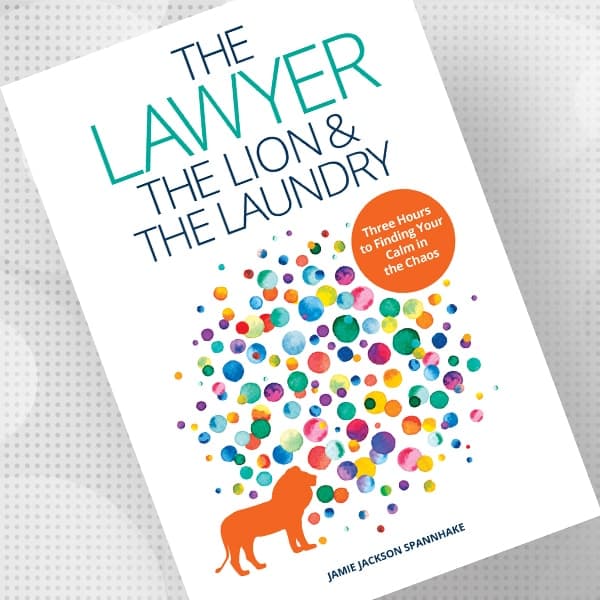When you work in a high-pressure environment like a law firm, unclear expectations can have a detrimental effect on professional satisfaction and mental well-being. Failing to set clear expectations for your team leads to confusion and uncertainty. This can lead to inefficiencies, heightened stress levels and, ultimately, burnout among lawyers.
If you want to build a team that works effectively for the long haul, you must set clear expectations.


What Do I Mean By Unclear Expectations?
Unclear expectations refers to a lack of specificity or ambiguity surrounding what is required or expected from individuals in their roles. For instance, ambiguous directives from senior partners on case strategies, vague deadlines for deliverables, or undefined performance metrics for associates can all contribute to uncertainty and confusion.
The Impact of Unclear Expectations
Role ambiguity. When lawyers are uncertain about their specific responsibilities, objectives or priorities on a case or in the firm, it becomes challenging to allocate time and resources effectively. This ambiguity can result in wasted effort on less critical tasks or constant anxiety about whether they are meeting the unknown expectations.
Stress and anxiety. The uncertainty caused by unclear expectations can also create a persistent sense of stress and anxiety among lawyers. Without a clear understanding of what success looks like, attorneys may constantly feel on edge, unsure if they are meeting the mark. This chronic stress can be overwhelming, leading to a perpetual feeling of inadequacy.
Lack of control. When expectations are ambiguous, lawyers may also feel powerless because they have no real control over their workload and performance. This contributes to feelings of frustration and helplessness, exacerbating the risk of burnout.
Overwhelm. Effective time management is essential for lawyers, but unclear expectations make it difficult to prioritize. Without clarity on which tasks or matters take precedence, lawyers may struggle to focus their efforts appropriately. This can lead to a cycle of feeling overwhelmed and unable to make meaningful progress.
Disengagement. Over time, dealing with ambiguous, shifting expectations erodes motivation and engagement. When lawyers are unsure of what constitutes success, it is challenging to stay committed and passionate about their work.
Five Ways to Set Clear Expectations in Your Law Firm
When you set well-defined objectives, provide regular feedback and maintain open lines of communication, you create a healthier work environment where people feel empowered and supported. Clear communication and transparency also mitigate the risk of burnout. Here are five strategies to ensure you set clear expectations for everyone on your team.
1. Establish Clear Objectives and Goals
Begin by defining specific objectives and goals for each case, project or task assigned. Clearly outline the desired outcomes, deadlines and key milestones. Providing a clear roadmap helps lawyers understand what success looks like and enables them to accurately plan their efforts and align their goals. Ensure you provide an opportunity for questions about the objectives and goals.
2. Communicate Explicit Role Responsibilities
Clearly define the responsibilities and roles of each team member within the practice. Ensure that lawyers understand their areas of focus, decision-making authority, chain of command, and expectations for collaboration with colleagues. This clarity minimizes confusion about who is accountable for specific tasks and leads to a more efficient workflow.
3. Set Realistic and Transparent Deadlines
Avoid vague timelines and instead establish realistic — and real — deadlines for deliverables. Communicate these deadlines clearly, taking into account the complexity and urgency of tasks. Providing transparency around timeframes helps the entire team prioritize and manage their workload efficiently. This transparency requires sharing actual deadlines with an explanation of why certain portions of a team’s work are needed in relation to the overall goals of the project. For example, if you need to file a brief on May 15, you may want the draft from your associate on May 10; if that’s the case, be transparent about the actual filing deadline (of May 15) and the reason you need the draft five days earlier (i.e., to read, edit, organize and ask for additional research if needed).
4. Provide Constructive Feedback and Performance Metrics
Implement a system for regular feedback and performance evaluation based on clear metrics, and make sure those metrics are shared at the beginning of the performance period, not at the end. For example, if your firm has yearly performance reviews every December, share the metrics by which you measure performance in January, not in November.
Define specific criteria for assessing performance and provide constructive feedback to legal professionals based on these metrics. This approach helps lawyers understand where they stand and identify areas for improvement, fostering continuous growth and development.
5. Foster Open Communication and Collaboration
Create a culture of open communication and collaboration within your law practice. Encourage lawyers to ask questions, seek clarification and share insights freely. Establish regular team meetings and check-ins to discuss expectations, address concerns, and ensure that everyone is on the same page. Open communication promotes transparency and reduces the likelihood of misunderstandings or misinterpretations. A culture of open communication also empowers junior lawyers and staff to be proactive by seeking clarification when they feel expectations are unclear.
With clear expectations, lawyers can perform their roles effectively, make informed decisions, and navigate challenges confidently. Ultimately, fostering a culture of transparency and communication will contribute to a healthier and more sustainable work environment with less burnout.


Three Hours to Finding Your Calm in the Chaos
By Jamie Jackson Spannhake
In this bestselling book written for lawyers, former Biglaw litigator Jamie Spannhake helps you clarify your desires and set priorities so you can reclaim your time and enjoy your life. Available in soft-cover and digital format.


Don’t miss out on our daily practice management tips. Subscribe to Attorney at Work’s free newsletter here >

